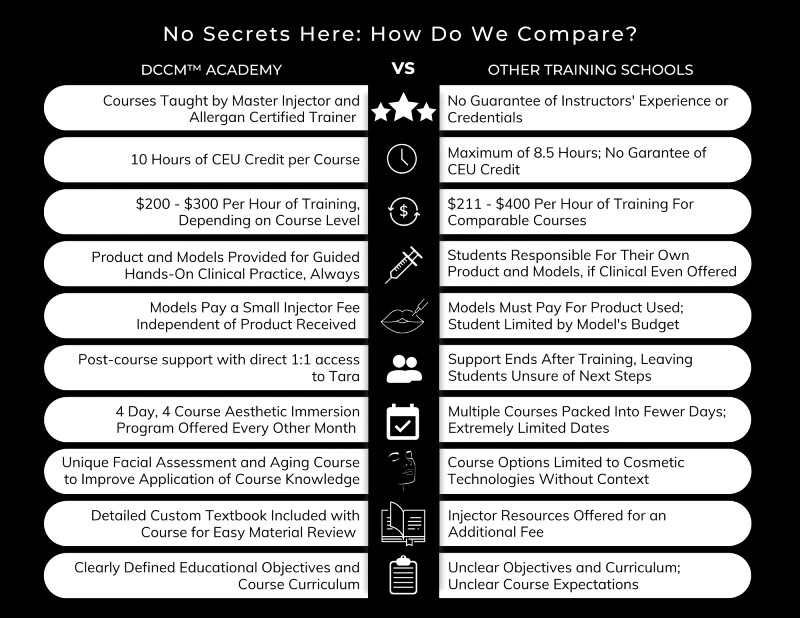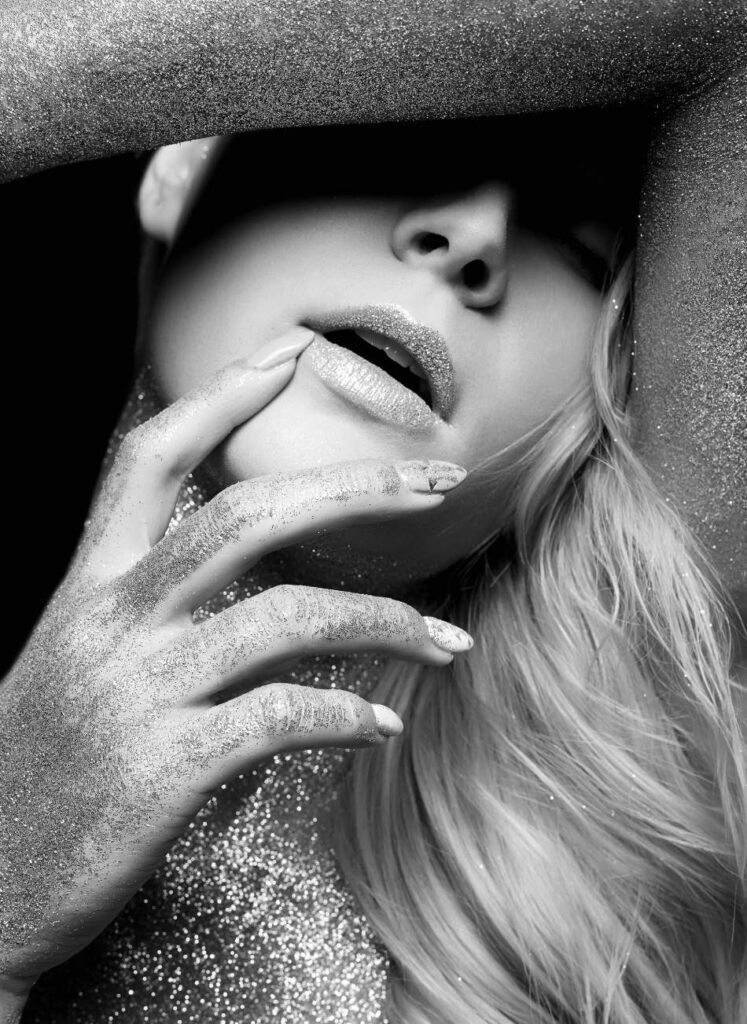Forehead Botox Units
Understanding How Many Units of Botox to Use For the Forehead
Botox or Botulinum Toxin Type A is a popular injectable drug used for cosmetic purposes. When administered properly, Botox is highly effective at temporarily minimizing the appearance of forehead lines and other facial wrinkles. If you want to become a skilled Botox injector, you must know how to determine the amount of product that should be used to reach aesthetic goals.
Before determining how many units of Botulinum Toxin Type A to use for the forehead, it’s important to understand the anatomy of forehead muscles. Failure to do so can lead to unwanted Botox effects such as hooded eyes and a heavy brow. This guide will help you understand how many Botox units for wrinkles are appropriate and answer other Botox-related questions.
The Anatomy of Forehead Muscles
The primary forehead muscle is called the frontalis. This is the muscle you use when you raise your eyebrows. It is the only muscle in the top 1/3 of the face that performs a lifting action. In addition to lifting the eyebrows, it also opposes the downward motion of the glabella muscle.
The glabella muscle has a depressor action activated when you squint, frown, or cry. Contraction of the frontalis muscle deepens the creases in the mid-forehead. In addition, the contraction of the glabella muscle makes vertical lines between the eyebrows more pronounced. Botox helps to minimize lines caused by the frontalis and glabella muscles.
What is a Unit of Botox?
A Botox treatment comes in single-serving vials. The formula consists of Botulinum Toxin Type A. Each vial contains between 50 and 100 units of Botox. It’s important to know how many units of Botox are recommended and how you can tailor treatment for every client. Administering the wrong dosage could result in unwanted side effects such as droopy eyebrows or a frozen, angry look.

Explaining Forehead Botox Benefits to Clients
Botox is not a filler and does not cause wrinkles to disappear. It also does not work like a chemical peel to smooth and stretch the skin. Instead, Botox injections minimize the appearance of wrinkles by relaxing the muscles that cause them to appear and deepen. It’s made from a purified neurotoxin produced by Clostridium botulinum, which is a bacterium.
This toxin temporarily paralyzes targeted facial muscles. Many patients choose to treat several areas of the face along with the forehead, including:
-
Crow’s feet (around the eyes)
-
Tear trough (under the eyes)
-
Lipstick lines (around the mouth)
-
Bunny lines (around the nose)
-
Jawline and neck areas
-
Chin (to prevent dimpling)
Botox injections can significantly decrease the appearance of wrinkles while the patient is at rest or in action.
How Forehead Lines Change with Age
Changes associated with the natural aging process can lead to glabellar lines. They can also cause horizontal folds across the forehead. These lines typically begin to develop in the mid-to late-20s. In the late 30s, they become more pronounced and can cause the eyebrow line to shift. By the time people reach age 50, they often have deep forehead furrows and prominent glabellar lines.
Manufacturer Recommendations for Forehead Botox Units
Allergan is the company that manufactures Botox. Its official recommendation is to use 20 units of Botox cosmetic across the face. Many clinics use between 10 to 30 units of Botox for forehead treatments, depending on each patient’s needs. The exact number of units you administer may vary based on the patient’s facial anatomy and other considerations.
How Many Units of Botox Are Normal?
It’s wise to start new patients with no more than 10 units of Botox. Slowly increasing the number of units over time can help reduce the risk of unwanted side effects. For patients who respond well to a Botox treatment, figuring out how many units for the forehead are most effective can be tricky.
Factors that Determine How Many Units of Botox to Use
Here are a few of the most influential factors determining how many units you should use for the forehead. These are some of the crucial learning points to expect in a botox training course.
Frequency of Facial Expression
Before treating forehead wrinkles with Botox, it is essential to understand the difference between dynamic and static wrinkles. People with dynamic facial expressions may require more Botox units in their foreheads than less expressive ones. Because dynamic wrinkles form due to facial movements, keeping the facial muscles still can help prevent them from worsening.
Facial Muscle Strength
The stronger the facial muscles, the easier it is for them to resist the effects of a Botox treatment. People with strong facial muscles may need to receive more Botox units per treatment and more frequent treatments to maintain their results than people with weaker facial muscles.
Severity of Lines
The severity of horizontal forehead lines can also determine how many Botox units are recommended. The deeper the wrinkles of the forehead appear, the more units of Botox are required to achieve the desired results. However, you should never administer more than 30 units of Botox to a single patient at one time.
How Far Botox Injections Spread
It’s not known exactly how far each Botox unit can spread once injected into the skin. However, the general consensus is that the spread is approximately a 1.5 – 2 cm radius from the forehead injection point. Knowing the approximate spread can help you determine how many Botox units for wrinkles are appropriate so you don’t over-inject.
Other Factors
Additional factors that may influence how much Botox is appropriate for horizontal forehead lines include sex, metabolism, and cosmetic goals. Men may require more units than women to achieve desirable results. A person’s metabolism can also impact the number of units they require. Generally, the faster the metabolism, the more Botox units are necessary. Finally, patients who want an ultra-smooth look may want more units than someone who wants to maintain full facial movement.

Forehead Botox Injection Sites
The FDA approves only certain sites for Botox injections on the forehead. These include the glabellar lines, forehead lines, and lateral canthal lines. The latter are the lines around the eyes, or “crow’s feet.” Botox injections can be used at each site, but that doesn’t mean you should automatically inject these sites. Where you inject the Botox depends on each patient’s unique preferences and expectations.
Why Is a Botox Unit Limit Important?
When applying Botox treatments for forehead wrinkles, it’s important not to inject too many units into the frontalis muscle. Otherwise, there will be nothing to oppose the downward motion of the glabella muscle. As a result, the patient could appear to have hooded eyes or an overly heavy brow.
Though this treatment is quite common and considered safe, the active toxin can be dangerous when injected in large quantities. To protect patients from unwanted side effects, strict rules exist regarding the quantity of Botox Botulinum Toxin Type A you inject into a patient.
How Long Botox Takes to Work
Some people begin noticing immediate results after Botox forehead injections. However, it takes time for the injection to impact fully. Therefore, you may want your patients to schedule a follow-up appointment about two weeks after the cosmetic treatments. That way, you can see how they respond to injections before recommending additional treatments.
How often Botox forehead treatments are done depends on each patient’s needs and treatment expectations. Generally, the effects of Botox forehead injections last around four months. However, they may wear off sooner than that in patients who have just received their first treatment.
How Much Is Botox for Forehead Lines?
It’s hard to predict Botox forehead cost because it can vary so much from patient to patient. The size of the treatment area, the number of areas treated, and the number of units injected can influence the final cost. However, the average cost of Botox treatment for the forehead is somewhere between $200 and $400.
Things to Avoid When Injecting Botox Into the Forehead
A common mistake people make when injecting Botox into the forehead is inducing brow ptosis in patients. This is when the eyebrow droops downward from its normal anatomical position. It can occur when you attempt to avoid creating the dreaded “Spock” eyebrows by over-injecting the forehead.
Pumping more units of Botox into the forehead will certainly help you avoid creating Spock-like eyebrows. However, this approach could induce brow ptosis instead. Remember that it’s generally much easier to resolve Spock eyebrows than to resolve brow ptosis. The former can usually be corrected with a quick top-up of toxin during a follow-up appointment. However, the latter often takes weeks to resolve on its own.
BECOME A SKILLED BOTOX INJECTOR
If you’re looking for a career option that’s fun and rewarding, look no further than becoming a top Botox injector. DCCM™ Academy provides expert training in both group and private settings. Our Essentials of Cosmetic Neurotoxin Course sets you up for success by learning:
-
Facial anatomical layers
-
Dosing and reconstitution guidelines
-
Popular treatment areas
-
Common patient concerns
-
Injection treatment mapping
-
Injection patterns
-
How to prepare patients for treatment
After you complete the course and certification, you’ll be able to treat patients with Botox, Dysport, Xeomin, Jeuveau, and Daxxify. We look forward to helping you get on the fast track to a highly rewarding career as a Botox injector.


My name is Tara and I am the owner of Delle Chiaie Cosmetic Medicine. I have been in medicine since 2002 as a Registered Nurse. In 2011 I graduated from the accelerated program at the University of New Hampshire (UNH) as an Advanced Practice Registered Nurse (APRN). My goal is to continually fine-tune the art of bringing one’s inner beauty to the surface.
My name is Tara and I am the owner of Delle Chiaie Cosmetic Medicine. I have been in medicine since 2002 as a Registered Nurse. In 2011 I graduated from the accelerated program at the University of New Hampshire (UNH) as an Advanced Practice Registered Nurse (APRN) and immediately became nationally recognized through the American Nurses Credentialing Center (ANCC) as a Board Certified Nurse Practitioner. I grew up in the beauty industry and found it was a great union to blend beauty with medicine. I have an astute sense of safety, while my experience guides my practice to produce beautiful and natural results. My goal is to continually fine-tune the art of bringing one’s inner beauty to the surface.


Let's Talk About
Your Career
*By submitting this form you agree to be contacted by DCCM Academy
and receive marketing messages by phone, text, or email. You can unsubscribe from these communications at any time. We commit to protecting and respecting your privacy. For more information, please review our Privacy Policy.
*By submitting this form you agree to be contacted by DCCM Academy and receive marketing messages by phone, text, or email. You can unsubscribe from these communications at any time. We commit to protecting and respecting your privacy. For more information, please review our Privacy Policy.

